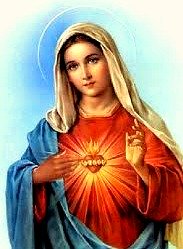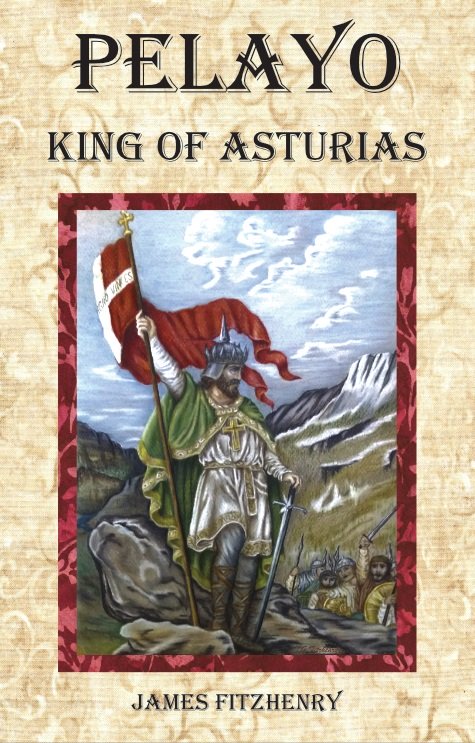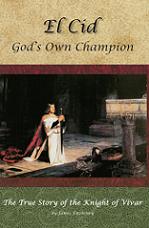Our Lady of the Flowering Thorn

March 24: Our Lady of the Flowering Thorn
From the infancy of the Church, images of our Blessed Lady have been in use among the faithful to enkindle and keep alive in their hearts a tender devotion to the mother of God. When the barbarians overran the Roman Empire, the Christians, fearful of profanation, hid these statues of the Blessed Virgin in the most secret recesses of caves and forests. The Huns and vandals spared neither age nor sex, and when the tumult of war had subsided, oftentimes few or none remained to withdraw those statues from their hiding places; and they rested until the providence of God made many of them be discovered and often in a miraculous manner. "Our Lady of the Flowering Thorn" was one of these, and the marvelous circumstances of the discovery are thus related by a chronicler of the olden time:
On the western side of the Jura, there once stood an old baronial residence. Its noble owner had heard the voice of St. Bernard calling through the length and breadth of the land, to the rescue of Jerusalem and of the holy sepulchre. He had listened to the thrilling words, "Hail to thee, holy city, city of the Son of God, chosen and sanctified to be the source of salvation to man. Sovereign of nations, capital of empires, metropolis of patriarchs, mother of prophets and apostles, hail to thee." The infidel had taken possession of her, and Christendom rose to the rescue.
Who has not heard of what the world calls the fatal ending of St. Bernard's crusade! Yet surely not fatal to those devoted souls whom the love of God inspired to fight for the land where Jesus suffered and died for them, and who fell on the battlefield, to rise and grasp the crown of glory. Among those heroes of the cross fell the lord of our castle on the Jura, leaving a widow to mourn her loss while she rejoiced in his gain. "Sorrowful, yet always rejoicing." Their names have been lost in the lapse of ages; he is only remembered as the crusader, she as the saint.
It was
on one of those days when winter, about to leave the earth, seems to cast
himself into the bosom of spring, that our saint was walking along the avenue
of her castle, her mind full of pious meditation. She had reached the
termination of the avenue, when her eye was attracted toward a thorny bush, and
there she saw an arbutus laden with the richest blossoms of spring. She
hastened towards it, doubtful whether the flakes of snow had not deceived her;
but no, she found it crowned with a multitude of little white stars shaded with
crimson rays, and she carefully broke off a branch to hang up in her oratory,
over an image of the Blessed Virgin which she had venerated from childhood, and
she joyfully returned towards the castle, carrying her innocent offering.
Whether this little tribute was really agreeable to the mother of Jesus, or
whether it was only that pleasure which the heart feels at the slightest
effusion of tenderness towards a beloved object, the soul of the lady was that
evening filled with the most ineffable sweetness. She promised herself a great
deal of pleasure in going every day to gather a fresh garland to adorn the
statue of her mother Mary, and she was faithful to her resolution.
Our
Lady of the Flowering Thorn
Now it happened that one
day, being very busy in relieving the wants of the poor who came to her for
alms and kind words, she could not go to gather her garland before the shades
of evening had covered the earth, and as she approached the thicket an uneasy
feeling came over her, occasioned by the increasing darkness. She was thinking
that it would be difficult to gather the flowers, when a calm clear light
seemed to overspread the bushes. Startled at the sight, and fearing that
robbers might be lurking there, she paused for a moment, but remembering she
had never once omitted to bring her offering, she boldly ventured forward,
though it was with a trembling hand she plucked the branch that seemed as if it
bent towards her.
During that night and all the next day, the lady reflected on what she had seen, without being able to account for it, and her heart being penetrated with the mystery, she went the following evening to the thicket, accompanied by a faithful servant and her old chaplain. The soft light was seen as they approached, becoming every instant more bright and vivid. They stopped and fell upon their knees, for it seemed to them that this light came from heaven. Then the good old priest arose, and moved with reverential steps toward the thicket, chanting a hymn of the Church; he put aside the branches which appeared to open of their own accord, and there, a little image of the Blessed Virgin, rudely carved by unskilled though pious hands, was descried in the midst of the bushes, and it was from this statue that the light emanated.
"Hail Mary, full of grace," said the priest,
kneeling before the image, "and at that moment a melodious murmur was
heard through the surrounding woods, as if the chant had been taken up by the
choirs of angels." He then recited those admirable litanies in which faith
speaks the language of the most sublime ecstasy; and after repeated acts of
veneration, he took the statue in his hands to carry it to the castle, where it
would rest in a sanctuary more worthy of it.
The lady and her servant followed with hands joined and bowed heads, repeating the responses of the solemn litany. It is needless to tell of the elegance and rich decorations of the niche where the hoy image was placed, surrounded with blazing lights and rich perfumes, while the lady and her household knelt in prayer until morning advanced—but lo! when the beams of the orb of day arose upon the earth the image was nowhere to be seen. Why had the heavenly Virgin quitted the widowed saint? What new dwelling had she chosen?
The blessed Mother of the lowly Jesus had preferred the modest shelter of her flowery thorns, to the splendor of a worldly dwelling; she had returned to the freshness of the woods to taste the peace of solitude and the sweet exultations of the flowers. All the inhabitants of the castle proceeded at evening to the wood, and found it more resplendent than ever. They knelt in respectful silence. “Queen of angels, Queen of all saints," said the chaplain, "it is here thou art pleased to dwell, be it as thou wilt."
And soon a chapel was raised on the spot, embellished with all the architectural beauties those ages of faith and poetic sentiment could inspire. The rich adorned it with gifts, and kings lavished it with jewels and gold. The renown of the miracles wrought there, drew large crowds of pilgrims, and ere long a convent reared its head, of which the saint became the superior. She died full of years and good works, and our Lady of the Flowering Thorn received her pure soul, and carried her in her maternal arms to the blissful bowers of paradise, where thornless flowers bloom forever around the Throne of God.
Still, each spring, till Time is no more, the thorn trees bloom, and white petals testify to those who will listen, to the tale that no scientist would believe, the story of Our Lady of the Flowering Thorn. If you wish to check on the details, you might go yourself to the forgotten valley near the highest peak of the Jura and walk among the ruins there. As you kneel on the grassy stone that once formed the arch above the chapel window, say a prayer to Our Lady for the one from whom I heard the tale, for me, and for all lovers and devotees of Mary.
Our Lady of the Flowering Thorn
The Sacred Heart Review, Volume 9, Number 26, 20 May 1893, and The Woman in Orbit
Have A Great Story About This Topic?
Do you have a great story? Have You Visited This Shrine? Share it!
Return to Marian Calendar March from Our Lady of the Flowering Thorn
Return to Titles of Mary from Our Lady of the Flowering Thorn
Return to Roman Catholic Saints Home Page from Our Lady of the Flowering Thorn
Now Available!!
Pelayo's resistance initiated the nearly 800-year-long Reconquista to take back his country from the ruthless invader who had conquered his homeland and sought to erase his culture and his faith. His actions would lay the foundations of a Kingdom for Christ that would eventually reach around the world and spread the Catholic faith to millions of souls. Read more...
Please help us continue to bring high quality books to our readers at the lowest possible price! Click the link below! Thank you!
Now Available!
Catholic Vitality Publications presents . . .Brand new by
James Fitzhenry
Now in paperback!
Battles - Honor - Miracles! This
book is filled with amazing stories of little-known Catholic heroes presenting
spectacles of bravery and valor never exceeded in all the annals of history. read more. . .
Now Available for $18.95
Also available:
Catholic Vitality Publications
Roman Catholic books currently published by Catholic Vitality Publications:
El Cid, God's Own Champion
-the amazing true story of the life of Rodrigo Diaz, El Cid!
Available for only $16.95
St. Fernando III
A Kingdom for Christ
- King St. Fernando III, born 100
years to the month after the death of
the Cid. His life was filled with miracles
and many conquests!
Available now for $26.95
Discounts available for bulk
orders and for bookstore
retail sales! Just contact us




